3-D Ovary Research Brief
When I first heard the term “artificial ovary,” I became more than a little wary of the idea. The first images to enter my mind were test tubes with embryos growing outside a human body. As a Christian with very clear beliefs about life from inception to death, I immediately wondered what our organization was potentially supporting. After a quick review, I not only calmed, but became wildly enthusiastic about the promise of this research.
The research is complicated. However, the essence is easily grasped and potentially hopeful. In this brief, PORF will give parents the rudiments of the research and share its potential ramifications for fertility preservation in children treated for cancer.
First of all, the 3-D Ovary is not an artificial monstrosity that creates babies in some contraption disconnected from natural embryo development. Rather, it is a “scaffold” that allows for the introduction of previously removed ovarian tissue to be naturally restored in the female body. This “prosthetic ovary” is designed to allow cryo-preserved ovarian tissue to be used naturally by the donor patient. Think of it as a tiny structure that holds the tissue in place so that it can naturally perform the function for which it was intended.
It is important to note at this juncture that the preservation of ovarian tissue is important for far more than enabling childbirth. Natural hormones for general health for puberty and beyond are contained in ovarian tissue. Once this tissue has been preserved, it has the potential for significantly influencing the health of the patient throughout her life. The 3-D ovary has the potential for enabling this potential in a safe, long-term manner. For this reason, it is important to think of both fertility and hormone preservation when considering ovarian tissue preservation for the cancer patient.
Second, the 3-D Ovary has the potential to benefit those girls whose cancer was systemic in nature. While malignant cells from contained, solid tumor cancers are not present in the cryo-preserved ovarian tissue, there is much less certainty in systemic cancer types. For example, Leukemia patients may well have malignant cells in their ovarian tissue at the time it is removed. This creates a particular issue for the use of that tissue after treatment. The 3-D Ovary holds hope for using only healthy follicles (follicles are the main functional units of the ovary; one follicle contains one potential egg cell surrounded by several hormone-producing cells) from the preserved tissue. Follicles could be removed from the rest of the tissue, thus cleansing it of cancer cells before introducing it into the patient.
Third, the 3-D Ovary has the potential to extend the life of the tissue being introduced into the treated patient. At this time, there is a limit to the time replaced ovarian tissue is functional. With the synthetic ovary, there is hope that the time frame can be significantly extended. This would be especially important to the young girl who needs to use hormone preservation to initiate natural puberty; to stop premature menopause, or to support general health throughout her lifetime.
Fourth, the 3-D ovary is not a device that will cause rejection in the recipient. Unlike some transplants, the 3-D Ovary may not require anti-rejections drugs to be taken by the recipient. Surely, any need to use such drugs complicates the decision to use a transplant. The goal of any hormone/fertility preservation is the natural use of preserved tissue. Therefore, having a device that does not cause additional drugs is a major benefit.
Throughout this brief, I have used tentative terms in speaking of the “potential” of the 3-D Ovary. This is important for parents and patients to appreciate. The prosthetic ovary remains in research development. It has been successful in mice and will soon be tried in other mammals. Human trials are a few years in the future. This means that for those girls who will be ready to use their preserved tissue within the next few years, direct implant is the best solution. Surgeons have been successful using this tissue for hormone restoration and for pregnancy. It is a fine solution for young women who are experiencing compromised hormone development, or inability to become pregnant as a result of cancer treatment.
That being said, the 3-D Ovary may prove to be a better option in time. 3-D Ovary recipients may be able to make extended use of their preserved tissue. They may be able to use follicles extracted from that tissue, instead of the whole tissue. They may be able to have a more natural use of the tissue over a lifetime.
In short, my knee jerk negative reaction to the idea of an artificial ovary has been completely allayed. This research development is significant and worthy of significant funding. PORF will do whatever possible to support this research in the hope of making hormone and fertility preservation the expectation of every young girl treated for cancer.
